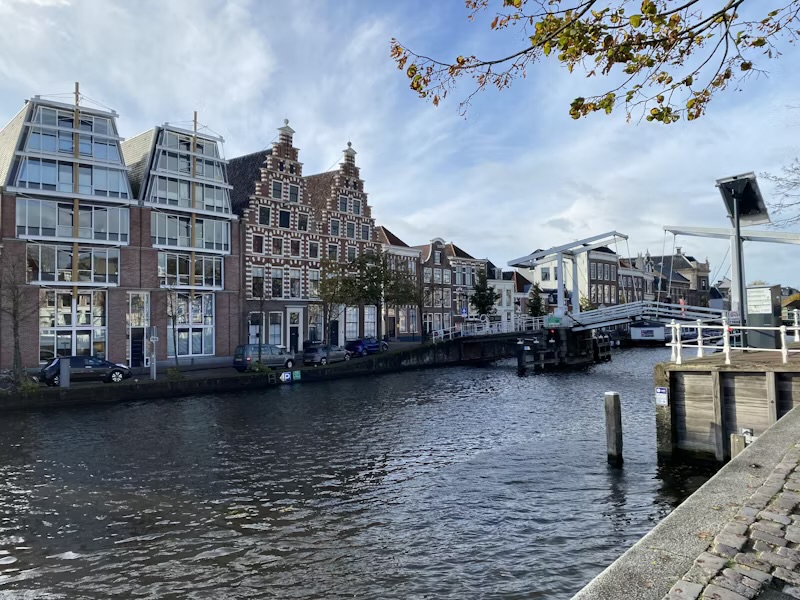The Dutch canals are not only picturesque waterways that attract tourists, but also form the beating heart of the historical development of cities like Amsterdam, Utrecht, and Leiden. They tell a story of trade, power, architecture, and culture, and are a symbol of how the Netherlands used its struggle with the water to its advantage. Have you ever wondered why the canals in particular are so admired? Their secret lies in the unique combination of economic value and cultural heritage.
This article takes you on a journey through time, from the first canals in the Middle Ages to the iconic canal belt of the Golden Age and its current status as a UNESCO World Heritage site. Along the way, you'll discover how trade and water management converged, how canals evolved into living spaces, and why they still play a vital role in the identity of the Netherlands today.
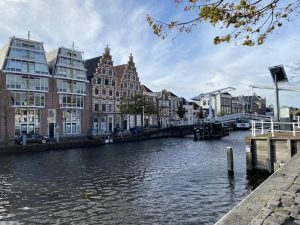
How and why were the first Dutch canals created?
The first Dutch canals were constructed in the Middle Ages, primarily as defensive structures and drainage channels. Cities like Utrecht and Delft quickly recognized the value of waterways not only to keep enemies outside the city walls but also to facilitate trade and transport. Canals were like arteries that supplied the urban body with oxygen: without them, growth would have been impossible.
Interestingly, canals were often dug in places where water levels were artificially controlled. Locks and dams allowed cities to use their canals as sewers, drinking water supplies, and transport channels. According to historical research from the University of Amsterdam, canals were crucial in creating livable cities in a water-rich landscape (Jansen, 2017).
What role did the canals play in medieval urban development?
In the Middle Ages, canals were multifunctional. They served as defenses, provided drainage, and formed the backbone of the urban transportation network. Think of canals as the highways of their time: ships transported goods and people faster than carts could navigate narrow, muddy streets. As a result, cities along the canals grew faster and more strongly than their competitors without waterways.
The presence of canals also influenced spatial planning. Houses were often built narrowly with long facades along the water, allowing merchants to easily load and unload their goods. This gave cities like Amsterdam and Leiden their characteristic cityscape. See the table below for the functions of canals in the Middle Ages:
| Function | Example |
|---|---|
| Defense | City walls of Utrecht with moat |
| Transport | Goods via the canals of Delft |
| Drainage | Water drainage in Leiden |
How did trade influence the construction of Amsterdam's canal belt?
Amsterdam's canal belt, constructed in the 17th century, is a direct result of trade growth and population growth. As the city grew into the economic center of Europe, expansion and a more efficient infrastructure were needed. Merchants, often organized into powerful guilds, financed and encouraged the construction of new canals. This not only provided space for shipping but also for stately homes that reflected the wealth of their residents.
It's fascinating that the canal belt wasn't created haphazardly, but was carefully planned. The so-called "grachtenplan" (Canal Plan) was a masterpiece of urban planning: concentric semicircles of canals that provided space for commerce, housing, and representation. Historians often describe it as one of the first examples of urban expansion plans in Europe (Prak, 2005). Imagine a city that breathes through its waterways, where every canal became a symbol of power and prestige.
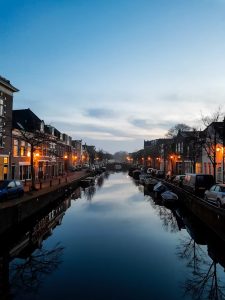
What was the significance of the canals during the Golden Age?
In the 17th century, the Dutch canals reached their peak. They were no longer merely functional channels but played a central role in the economic and cultural flourishing of the Netherlands. The canals served as transport routes for spices, grain, timber, and other goods shipped to Amsterdam by the Dutch East India Company (VOC). Their significance extended beyond economics: they also became a platform for art, science, and international prestige.
But how could simple waterways have such an impact? The canals literally connected the world to the city. They were like windows through which exotic products, ideas, and people flowed. Without the canals, Amsterdam would likely never have earned the nickname "warehouse of the world."
How were canals used for transport and trade?
Canals were the lifeblood of the Dutch Golden Age. Ships, large and small, transported goods directly to the warehouses and markets along the water. Water transport was faster, safer, and cheaper than land transport. This allowed merchants to make enormous profits, and Amsterdam became the hub of world trade.
A short list of typical goods transported via the canals:
- Spices from Asia (pepper, nutmeg, cinnamon)
- Grain from the Baltic Sea
- Wood from Scandinavia
- Wine from France
- Silver and gold from South America
According to figures from the International Institute of Social History, in some years thousands of ships passed through the canals of Amsterdam each month, which indicates how intensively they were used (Israel, 1995).
What influence did merchants, shipping and trading houses have on canal life?
The role of merchants in canal life cannot be overstated. Their wealth shaped the architecture along the water, with monumental canal houses serving as both residences and offices. Merchants used canals not only for logistics but also as symbols of power and reliability. The water served as a calling card: the wider and more stately your canal-side building, the greater your status.
The shipping industry also flourished. Shipyards, hangars, and warehouses sprang up along the canals, creating a vibrant ecosystem of labor and trade. Many of these buildings can still be admired today, highlighting the historical continuity of canal life. As art historian Geert Mak once wrote: “Amsterdam’s canals were the catwalks on which the merchant elite displayed their power and grandeur” (Mak, 2001).
How did the canals change from economic arteries to living spaces?
With the decline of Dutch trade dominance in the 18th and 19th centuries, the canals gradually lost their economic function. They transformed from bustling trade routes into more residential and recreational spaces. Warehouses were converted into homes, studios, and later even offices. The canals took on a new role: as a residential and living environment.
This transformation, however, was not without its challenges. Many canals became severely polluted due to industrial waste and sewage problems. Only in the 20th century, with large-scale remediation and restoration, did the canals regain their current splendor. Today, they are known as iconic residential areas of international allure, with house prices among the highest in Europe.
Have you ever wondered what it would be like to live by a canal? Imagine opening your window in the morning and seeing the rippling water where ships laden with spices once sailed. That's the magic of the Dutch canals: a harmonious marriage of past and present.
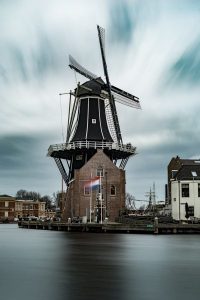
Which architectural styles are visible along the canals?
A vibrant architectural museum unfolds along the Dutch canals. From the narrow Gothic houses of Utrecht to the opulent Baroque facades of Amsterdam, the architecture tells a story of prosperity, fashion, and social status. During the Golden Age, stately stepped gables and bell gables dominated, often adorned with ornaments reflecting the owner's profession or status. Later, more austere styles like Neoclassicism and the 19th-century Empire style came into vogue, recognizable by their clean lines and symmetrical facades.
These styles are not merely decorative; they reflect economic and cultural changes. A wealthy merchant's house on the Herengracht exuded prestige and power, while a more modest building in the Jordaan district told a completely different story. Architectural historian Cruysheer (2014) emphasizes that the accumulation of styles is not random, but rather forms a layered archive that reflects the development of the Netherlands. It is like leafing through a history book, but in brick and stone.
How was daily life organised around the canals?
Daily life around the canals was saturated with activity. During the day, ships were teeming with unloading goods and workers moving cargo. In the evening, the canals became a gathering place where neighbors met, children played, and musicians resonated across the water. The canals were literally and figuratively the city's arteries, where work, relaxation, and social interaction converged.
In addition, the canals served as economic engines for the residents. Shopkeepers established their stores along the waterfront to ensure direct access to transport. Small craftsmen – from tanners to brewers – also benefited from the water's proximity. A list of typical activities along the canals illustrates this:
- Trade and transshipment of goods
- Craft workshops and small industries
- Social gatherings and neighborhood activities
- Religious and cultural festivities along the quays
In this microcosm of work and play, a unique urban culture emerged, in which water was not only functional but also a social glue that held communities together.
Why are the Dutch canals considered cultural heritage?
The Dutch canals are considered cultural heritage because they symbolize the creativity, resilience, and entrepreneurial spirit of the Netherlands. They combine water management with urban beauty and provide a tangible reminder of a period when the Low Countries were the center of world trade. Moreover, they embody the harmonious collaboration between humans and nature, a theme that remains relevant today.
According to the Cultural Heritage Agency of the Netherlands, the canals are unique because they were designed both functionally and aesthetically (RCE, 2020). This duality makes them special: they are not only useful infrastructure, but also works of art that contribute to the identity of cities and the collective memory of the Netherlands. It's like walking through a 17th-century painting, but in reality.
How does UNESCO World Heritage status contribute to the protection of the canals?
Amsterdam's canal district received UNESCO World Heritage status in 2010. This recognition means that the canals are invaluable not only nationally but also internationally. UNESCO emphasizes the unique character of the urban planning and the role of the canals in world history. But what does this mean in concrete terms for their protection?
The status entails strict regulations for restoration and new construction. Municipalities must comply with international guidelines, preventing inappropriate alterations. Moreover, the status attracts global attention, leading to increased tourism and funding for conservation. According to UNESCO (2010), this helps to sustainably manage the heritage and protect it from the pressures of modernization and climate change.
Which historical sources and experts confirm the value of the canals?
The value of the canals is extensively documented in historical sources and confirmed by numerous experts. Seventeenth-century travelers, for example, described Amsterdam as the "Venice of the North," praising the canals' beauty and efficiency. Modern historians, such as Simon Schama in his book *The Embarrassment of Riches* (1987), also emphasize the canals' cultural and symbolic value as an expression of Dutch identity.
Moreover, archaeological finds along the canals—from shipwrecks to household objects—provide tangible evidence of their historical significance. These sources offer a rich picture of how people lived with the water throughout the centuries. They are like voices from the past, reminding us of the deep-rooted relationship between the Dutch and their canals.
What are the biggest challenges in canal conservation today?
Although the canals look magnificent, they are threatened by modern challenges. Climate change, pollution, intensive tourism, and high maintenance costs are jeopardizing their unique character. A canal seems timeless, but behind the scenes, constant maintenance is required to prevent subsidence, flooding, and erosion. Preserving canals is therefore not a given, but a daily struggle.
Moreover, the popularity of the canals as a tourist attraction raises new concerns. Mass tourism leads to the deterioration of quays and bridges, while the quality of life for residents is declining. This tension between heritage and modern use is an ongoing puzzle for policymakers and communities.
How do municipalities and heritage institutions deal with restoration and sustainability?
Municipalities and heritage organizations play a crucial role in preserving the canals. They carry out restoration projects, strengthen quay walls, and deploy technology to monitor water levels and subsidence. Innovative techniques, such as underwater concrete and advanced sensors, are used to limit damage without compromising the historic character.
Sustainability is receiving increasing attention in this process. Environmentally friendly materials are being used, and there are initiatives to better regulate tourism. According to the City of Amsterdam (2021), hundreds of kilometers of quay walls are in urgent need of renovation. This is a massive undertaking that will take decades and cost billions of euros.
What role do residents and visitors play in preserving the canals?
Residents and visitors share responsibility for preserving the canals. Their behavior largely determines how clean, safe, and livable the canals remain. Consider waste separation, responsible use of houseboats, and noise reduction. Resident initiatives, such as neighborhood committees that oversee restoration, also play an important role.
Visitors also contribute, both positively and negatively. Tourists who treat the heritage respectfully enhance its cultural value, while massive party boats and pollution actually cause damage. Establishing awareness campaigns and rules of conduct can help strike a balance. Ultimately, the canals are a shared heritage that can only be preserved through shared responsibility.
What can we learn from the canals for future urban development?
The Dutch canals are not only a window into the past but also a source of inspiration for the future. At a time when cities worldwide are grappling with climate change, rising sea levels, and urbanization, the canals offer valuable insights. Their design demonstrates how water management, urban planning, and aesthetics can go hand in hand. But can modern cities apply this age-old model to overcome future challenges?
The answer lies in rediscovering the principles that made the canals such a success: smart water management, multifunctional use of space, and the integration of nature and architecture. In this way, the canals serve as a blueprint for sustainable cities, where water is seen not as an enemy, but as an ally. According to the World Bank (2020), cities that integrate water into their infrastructure are more resilient to flooding and heat stress.
What lessons do the canals offer in terms of water management and climate adaptation?
The canals demonstrate that water shouldn't be squeezed out, but controlled and utilized. In the 17th century, smart locks and dams were used to regulate water levels. This principle can be translated into modern solutions today, such as water squares, green roofs, and rainwater reuse. The idea is simple yet powerful: live with the water, not against it.
Moreover, the canals offer lessons in climate adaptation. Their role as a natural buffer against heavy rainfall and flooding is comparable to contemporary adaptation strategies. A metaphor helps to understand this: imagine a city as a sponge. The better that sponge can absorb and regulate water, the more resilient the city becomes. The canals proved centuries ago that this model works and today they provide us with direction for a more sustainable future.
How can you experience, discover and support the canals yourself?
The canals aren't a static museum piece, but a living heritage you can actively experience. Whether you're a resident or a visitor, there are countless ways to experience the magic of the canals. From a boat tour past historic buildings to a leisurely stroll along centuries-old quays, the canals invite you to explore. But how do you choose the experience that's right for you?
The key lies in curiosity and engagement. By delving into their history and enjoying their beauty, you indirectly contribute to their survival. Moreover, small gestures, such as responsible tourism and participation in local initiatives, make a huge difference in preserving this heritage.
Which canal cruises, museums, and walking routes offer a unique view of the canals?
Canal cruises are one of the most popular ways to explore the canals. They offer a unique perspective from the water, allowing you to literally experience the city from its heart. Museums like the Canal Museum in Amsterdam also offer an in-depth look at the history and significance of the canals. Walking routes, such as the famous Golden Bend route along the Herengracht, also bring you closer to the stories behind the facades.
An overview of options to experience the canals:
- Tour boats (day and evening trips)
- It Canal Museum in Amsterdam
- Walking routes through the Jordaan and along the canal belt
- Art and culture festivals on and around the water
These activities will allow you to discover not only the beauty of the canals, but also their historical and cultural depth.
How can you contribute by sharing stories, photos or experiences?
Everyone can contribute to preserving the canals by keeping their stories alive. Share your photos on social media, write a blog, or share your experiences with friends. This way, the heritage is preserved not only in stones and water, but also in memories and emotions. Have you ever witnessed a sunset on the Prinsengracht? Sharing such an experience inspires others to appreciate and protect the same.
Moreover, there are initiatives where residents and visitors can actively contribute their knowledge and memories. Think of online archives where personal stories are collected, or neighborhood projects that digitize old photos and documents. These kinds of contributions strengthen the bond between people and heritage and demonstrate that the canals are not just monuments but also living stories.
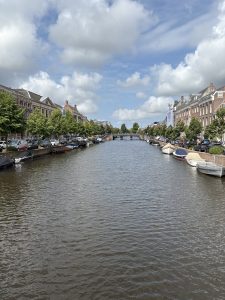
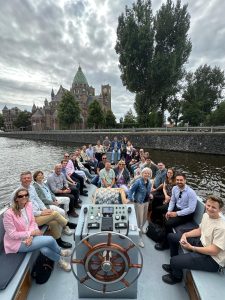
What are the key insights and why do the canals remain so meaningful?
The Dutch canals are more than just waterways; they symbolize a culture that successfully woven water management, trade, art, and architecture into a harmonious whole. Their significance lies in the fact that they remind us of the resilience and ingenuity required to survive in a country below sea level. They are a tangible reminder that challenges can become opportunities, provided we approach them with creativity and cooperation.
The key insights are that canals demonstrate how people and nature can strengthen each other, how heritage can be a source of identity, and how the past and the future remain connected. The next time you walk along a canal, ask yourself this question: what do these still waters tell me today? Their whispers are timeless, and their message is clear: cherish what we have, so that future generations can experience the same magic.
